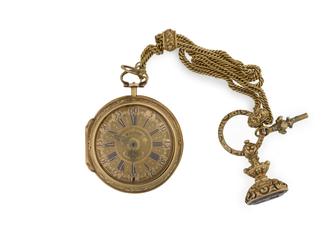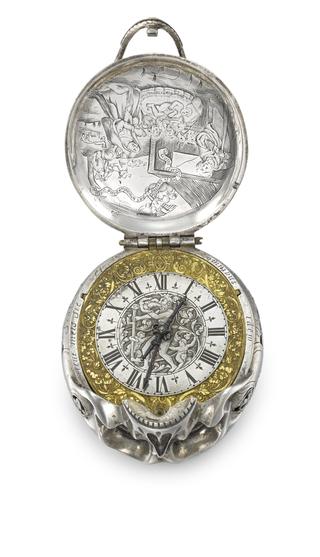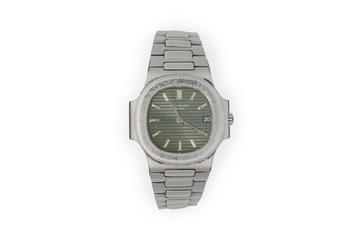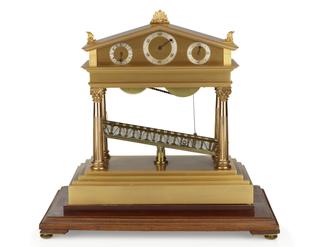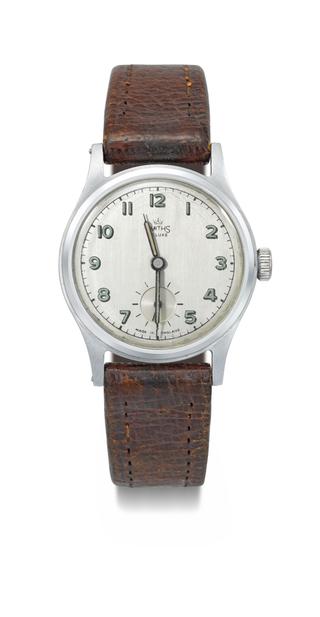
Longcase clock by James and John Harrison
- Made:
- 1728 in Barrow-upon-Humber
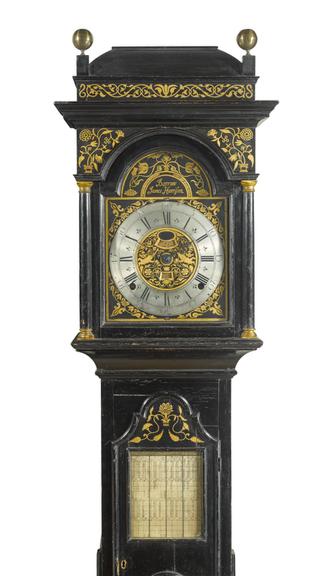
Striking, longcase clock by James and John Harrison, 1728, Barrow-upon Humber, North Lincolnshire. Ebonised pine case with hand painted gold flower motifs. Within the door of the case is a window displaying an equation-of-time table in John Harrison’s hand. It is is corrected for the change to the Gregorian Calendar in 1752. The 11 inch wooden dial is hand-painted with a silvered hour circle. Indications for seconds and day-of-month show through apertures. Signed in the arch of the dial 'Barrow, James Harrison'. Movement of 8 day duration, with a grasshopper escapement, original temperature compensated gridiron pendulum, adjustable cycloidal cheeks and maintaining power. The plates and wheels are made of oak, and the roller pinions of lignum vitae and brass. Signed 'James Harrison 3rd 1728 Barrow' on the calendar wheel.
John Harrison and his younger brother James made three precision longcase clocks between the years 1725 and 1728, of which this one is the third. The grid-iron pendulum was developed by Harrison around this time and all three clocks include this type of pendulum, although it is only this clock which was fitted with the grid-iron at the time the clock was made. Clockmakers Museum No. 553
Details
- Category:
- Clockmakers
- Collection:
- The Worshipful Company of Clockmakers
- Object Number:
- L2015-3438
- Materials:
- brass (copper, zinc alloy), lignum vitae, oak (wood), steel (metal), pine (wood), wood (unidentified), lead (metal) and glass
- type:
- longcase clock and grasshopper escapement
- credit:
- Lent by the Worshipful Company of Clockmakers

